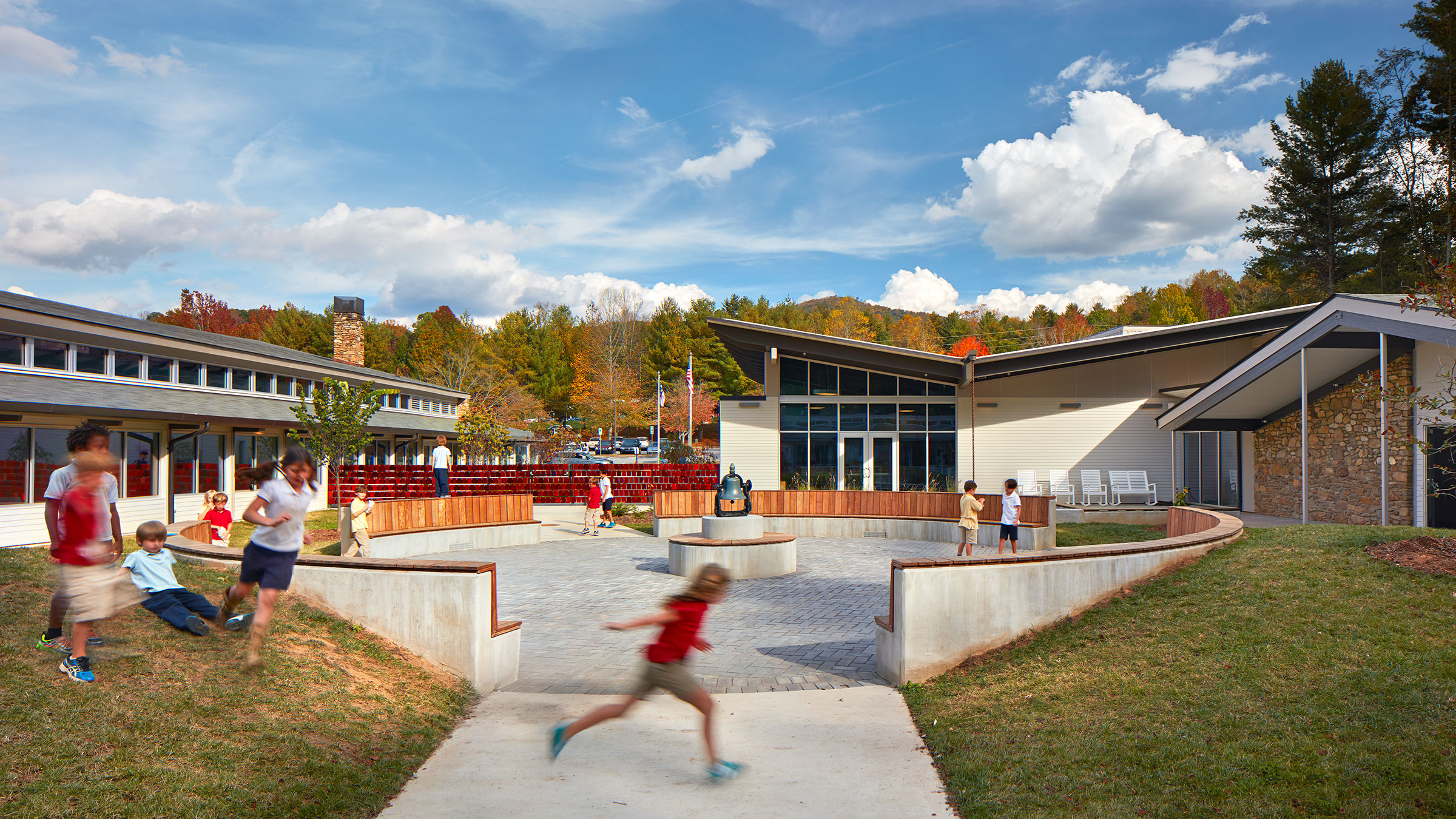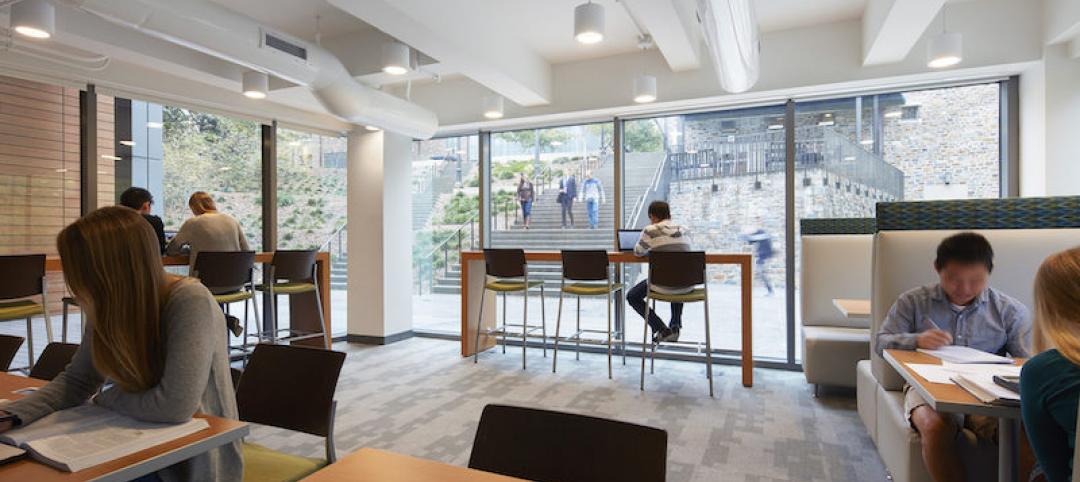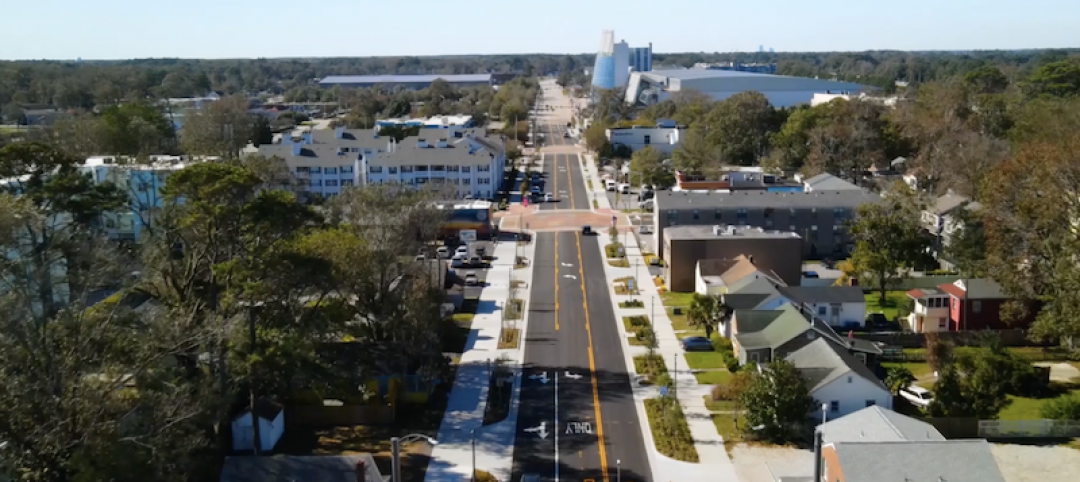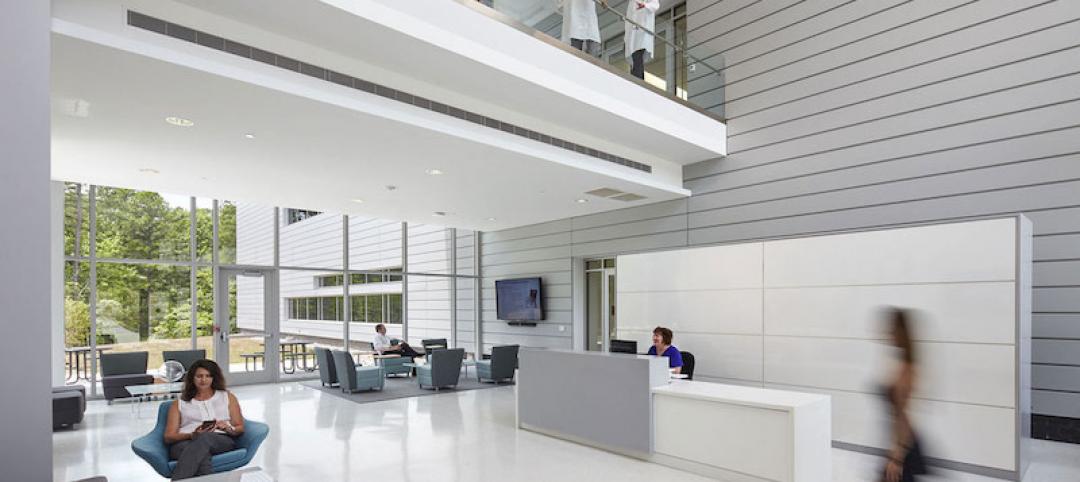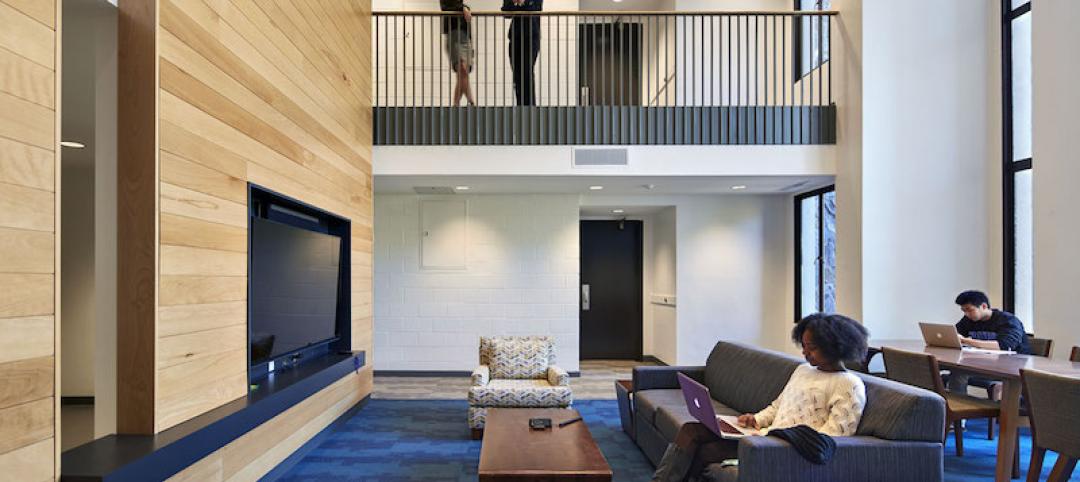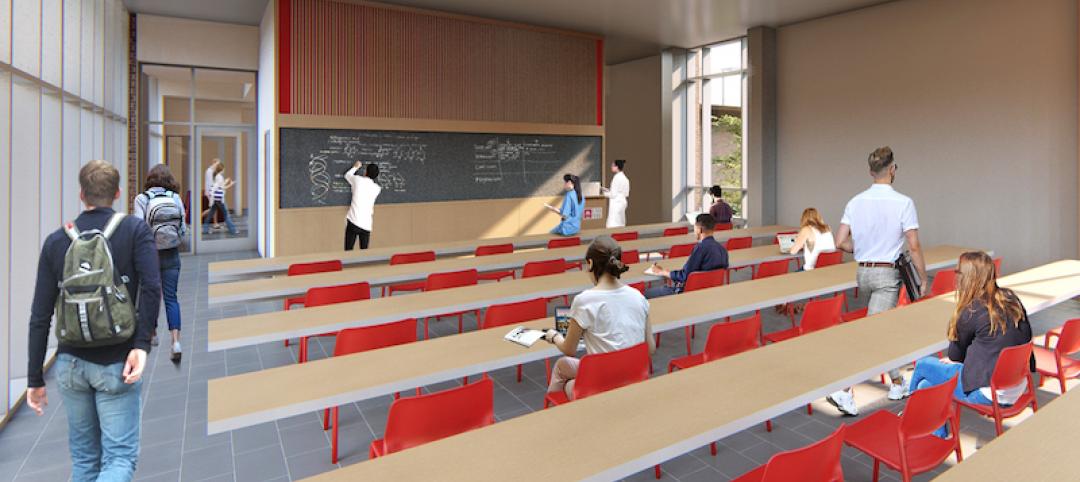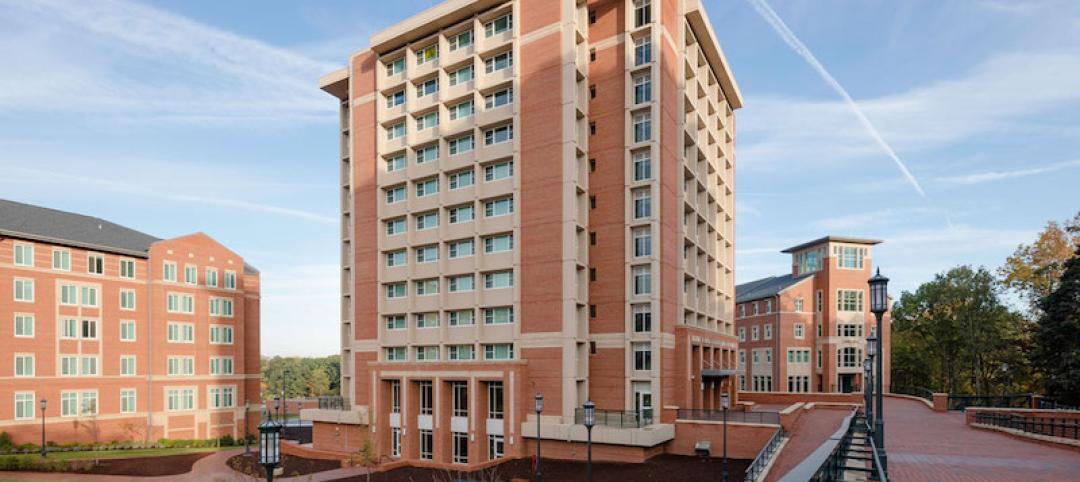In the conversation around school safety, active shooter scenarios still garner the most attention – but there is a valid argument to shift our focus to a more holistic, preventive approach by creating healthier school environments that encompass safety on all levels – not just the most extreme.
We know that regular time spent outdoors contributes to better mental health and happiness, regardless of age, and research at the K-12 level indicates that outdoor experiences lead to higher student engagement and test scores, and notably, fewer violent incidents. The creation and consistent use of outdoor environments must be a priority in K-12 design to foster students’ overall wellbeing.
In the study, ‘Nature experience reduces rumination and subgenual prefrontal cortex activation’ by Bratman et al, he states, “More than 50% of people now live in urban areas, and by 2050, this proportion will be 70%.” Urbanization is growing at a staggering rate, and it correlates with the impact of nature deficit disorder (a lack of direct interaction with nature on a regular basis) – particularly with regard to its link to growing diagnoses of mental disorders.
Similarly, the school environment plays a critical role in a student’s ability to effectively learn, interact appropriately with other students or teachers, and have a positive school experience. Outdoor spaces at school offer students key opportunities to learn, problem solve, and mentally refresh – ultimately benefiting both education and mental health. These benefits occur through four key areas of interaction with the natural environment: outdoor education, outdoor play, outdoor experience, and outdoor exposure.
Outdoor Education
There are a number of schools throughout the world that take outdoor education to a maximum – where students (usually primary age) are taken to an outdoor environment, rain or shine, and are supervised by teachers while they learn at their own pace through individual play and discovery as well as group-led exercises. With the wilderness at their disposal, children are learning problem solving skills, how to work with others, and about the surrounding natural world.
The Natural Connections Demonstration, a four-year English outdoor learning project, released strong evidence in 2016 detailing the benefits of outdoor education for both children and teachers. The positive impacts bridged learning and behavior, with 92 percent of teachers reporting more engaged students with better behavior.
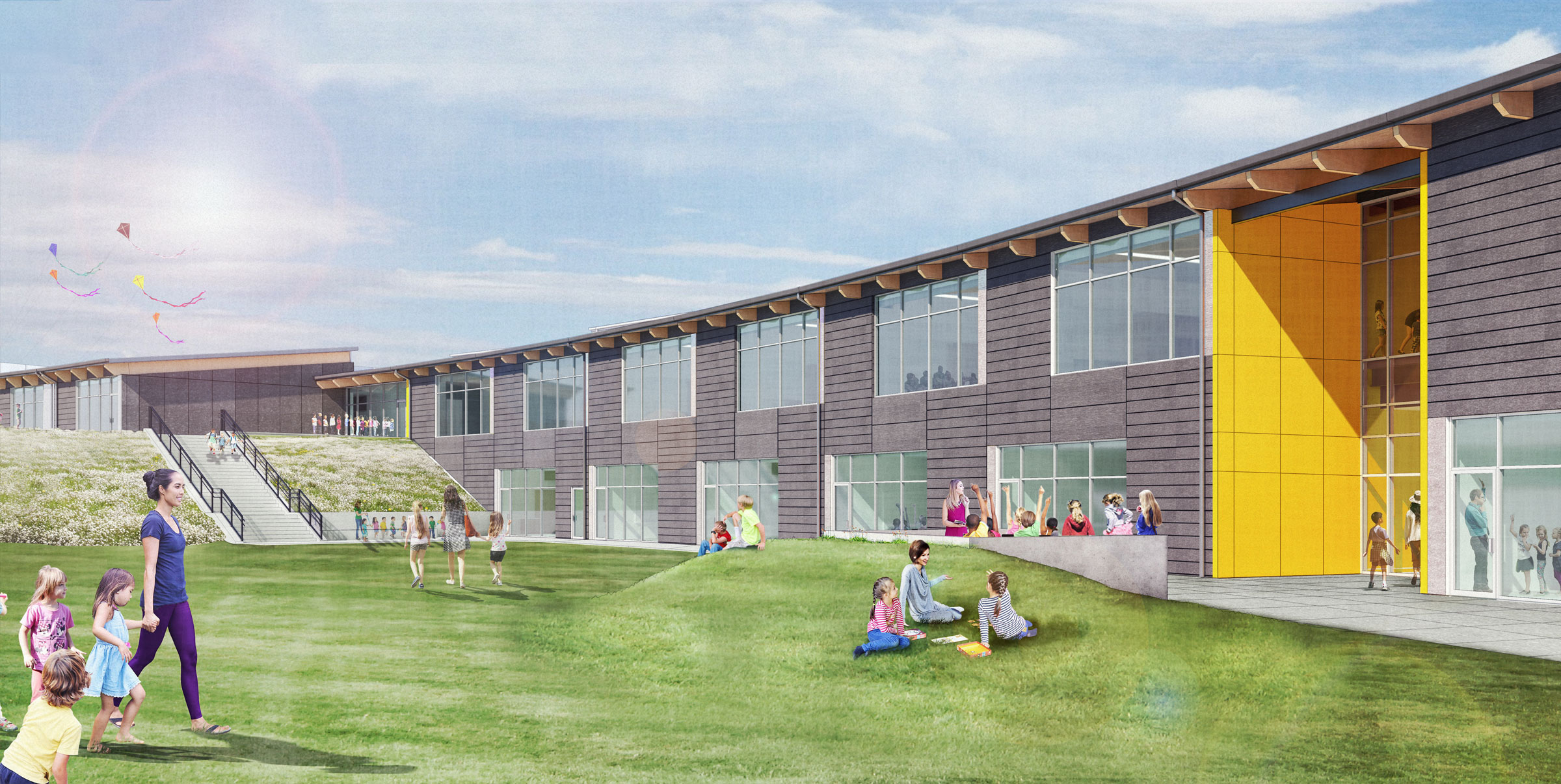 At Edneyville Elementary School, the design capitalizes on required exterior retaining walls to create berms for varied landscape, which leads to opportunities for differentiated play within a larger open field. Photo courtesy Clark Nexsen
At Edneyville Elementary School, the design capitalizes on required exterior retaining walls to create berms for varied landscape, which leads to opportunities for differentiated play within a larger open field. Photo courtesy Clark Nexsen
The students also self-reported better learning and achievement, with 92 percent sharing that they enjoyed their lessons more outdoors and 90 percent reporting feeling happier and healthier. Perhaps equally significant, the project found that outdoor lessons benefited the actual instruction taking place, with teachers reporting positive impacts on their teaching practice, job satisfaction, and health and wellbeing.
A growing body of research clearly illustrates improvements to mood, stress levels, and academic achievement through outdoor learning. One study shows that being outdoors for classes can help more active or assertive students better control their emotions, while another indicated more open communication with teachers, notably from children with more closed personalities.
Creating intentional opportunities for outdoor education should be a priority on every project, for every design team. To achieve this, the architects in our K-12 practice collaborate closely with landscape architects to develop effective, accessible outdoor space. The new Apex High School, for example, embraces an existing courtyard as the heart of the school, introducing support space for specific classes as well as areas for general outdoor learning.
One study described a high school gardening class conducted in several schools in Colorado as so beneficial to its participants in relieving stress and providing a sense of calm that other students not enrolled in that class would sometimes be advised to join in for a period of time to help relieve stress. This class was a requirement for young mothers in high school, who found it beneficial to their sense of self-worth as they defined their new roles as mothers and explored the parallels of caring for living beings. Direct involvement with the care of nature translates to healthy social interactions between students and other students, staff, and family members.
Outdoor Play
Like outdoor education, outdoor play delivers numerous benefits to students, accommodating involuntary learning and allowing for the type of risky play that is essential to healthy development and problem solving. Time for outdoor play or “recess” can relieve pent-up energy and alleviate hyperactivity in the learning environment. Students see playtime as “their” time, and while supervised, there is a feeling of independence, decision making, and ownership, which makes this time more valuable to students.
With less direct supervision, playtime can coincide with an opportunity for bullying – but the role of outdoor play in ultimately mitigating student conflict is the result of its ability to help students develop strong social skills and appropriate interaction. Typically, bullying during playtime is responded to with added restrictions, making it less fun for both students and supervising staff, who are then policing play areas.
In several studies, when play areas were changed to encompass a variety of play opportunities, students performed better than if restrictions were placed on play. Students classified as having poor behavior experienced the greatest benefits in terms of energy, happiness, and less stress. Evans, in her study ‘In search of peaceful playgrounds,’ states, “playgrounds become much more peaceful and harmonious when play spaces are diversified.”
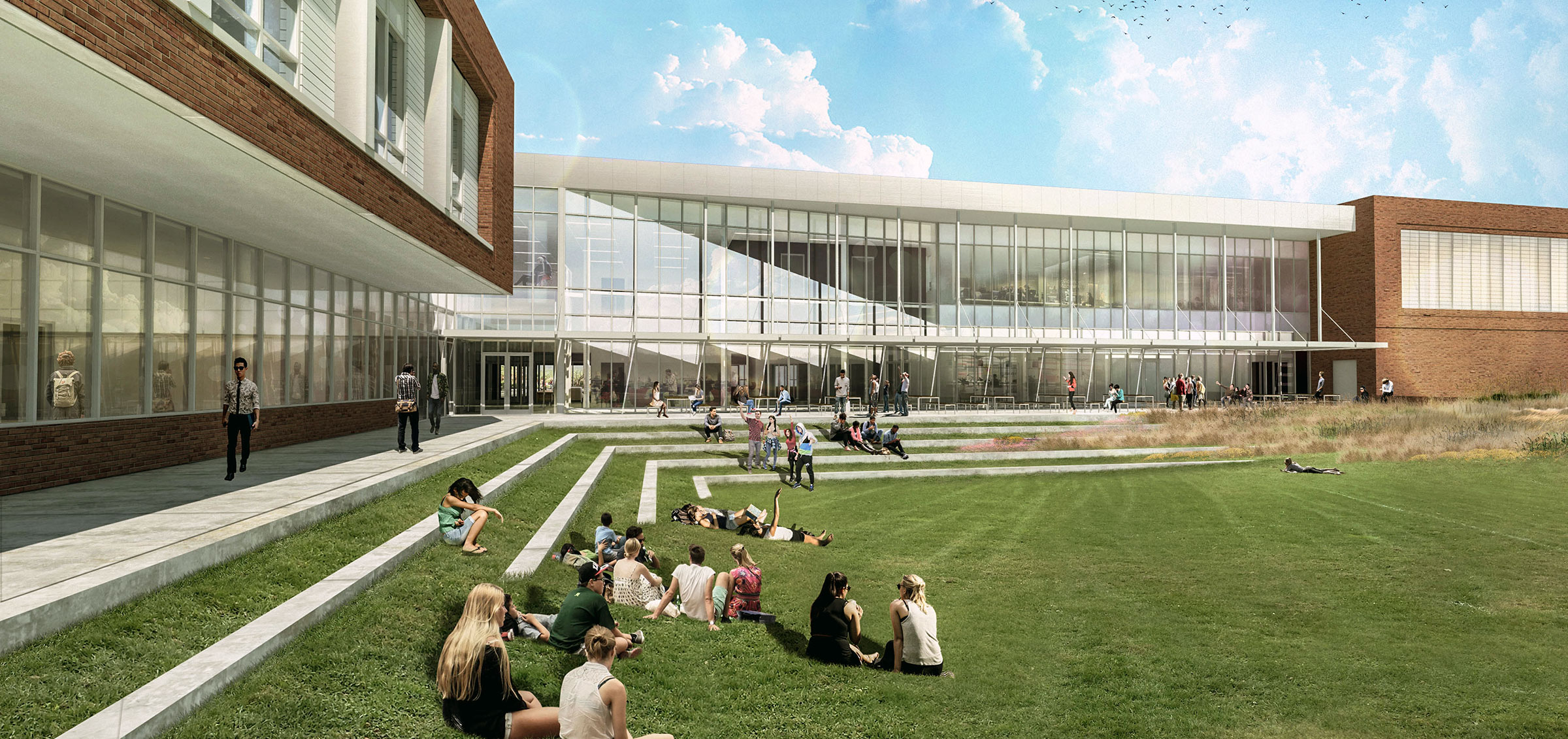 The open field created by the juncture of the L-shaped Innovative High School has become a popular gathering space for recreation, dining, and study. Rendering courtesy Clark Nexsen.
The open field created by the juncture of the L-shaped Innovative High School has become a popular gathering space for recreation, dining, and study. Rendering courtesy Clark Nexsen.
Many studies have been done on the types of play areas that are most beneficial to students. Those with fixed equipment and paved areas are the most common, but are less beneficial than those with loose parts and variations in landscaped green spaces.
Natural play areas have been shown to promote positive moods, reduced stress and anger, and lower rates of depression. Self-led exploration, manipulation, and discovery during play promotes imagination and progresses with age. This type of play – and involuntary learning – is critical to students’ ability to navigate social interactions.
The full benefits of outdoor play do appear to cut-off around age 12, when social worlds begin to take precedence over free play, but students of all ages showed restored “mental fatigue” and lower levels of stress after spending time playing outdoors. This correlation compels us to find and create opportunities for outdoor engagement for all students, K-12th grade.
K-12 schools aren’t the only community resources that benefit from natural, varied play spaces. Joyner Park’s new community center will integrate an exceptional nature-themed play area designed by CLH design, p.a., featuring varied landscape and play structures that promote exploration and discovery. Children can climb on rocks, crawl under the belly of a worm, navigate through berms and bridges, or enter a giant bird house.
Outdoor Experience
Stress in younger students has been shown to lead to mental illness later in life; this alone emphasizes the need to create more outdoor experiences for K-12 students. Experiencing nature in different ways beyond learning and play can relieve feelings of stress, including acts as simple as taking a walk or sitting outside. Walking has shown connections with reduced mental risk factors such as rumination and can support behavioral and cognitive wellbeing.
Taking a classroom outside for a walk at different times of year provides involuntary learning opportunities such as teaching students the natural cycle of plants or animals and promoting caring and empathy for other living things. These positive outdoor experiences translate into social behaviors and interactions with other students. In the study ‘Benefits of Nature Contact for Children’ by Chawla, she states, “The more stressful events that children experienced, the more strongly nature acted as a buffer,” and, “Young people classified with poor behavior experienced the greatest benefits in terms of greater energy, happiness, and less stress (from nature contact).”
Experiencing nature can also promote physical activity, enhancing overall physical and mental health. Given the country’s rising rates of childhood obesity, greater levels of physical activity are critical to our population’s long-term health. A study in the journal Health Affairs indicates that fewer than one in three American children get enough exercise on a weekly basis. Without an increase in activity, more than 8 million will be obese by the age of 18, and associated healthcare and lost productivity costs could exceed $3 trillion.
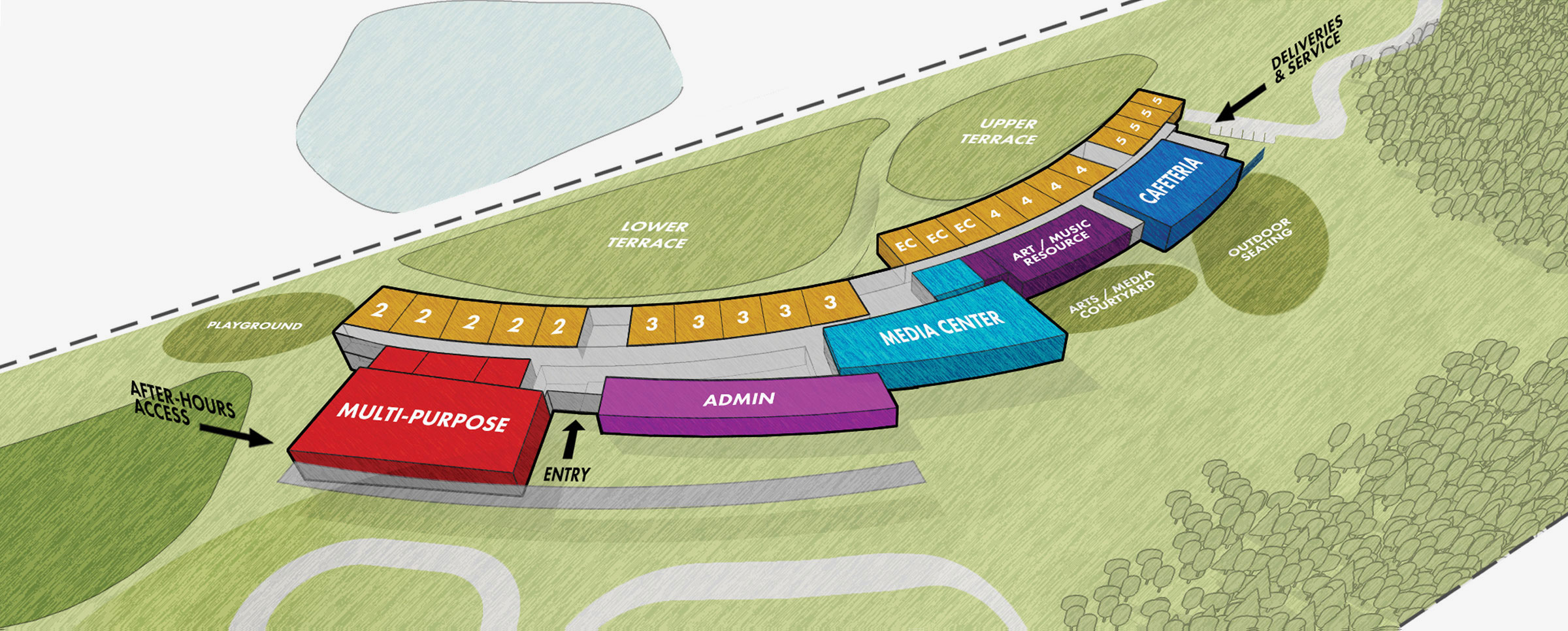 Indoor-outdoor connectivity was a design priority for Edneyville Elementary School. Through engagement meetings with staff and community members, the team learned that there was a strong preference for views to a lake adjacent to the school property. The result is that the new school’s building form was developed in a direct response to the lake, and every classroom has a view and direct connection to it. Photo courtesy Clark Nexsen
Indoor-outdoor connectivity was a design priority for Edneyville Elementary School. Through engagement meetings with staff and community members, the team learned that there was a strong preference for views to a lake adjacent to the school property. The result is that the new school’s building form was developed in a direct response to the lake, and every classroom has a view and direct connection to it. Photo courtesy Clark Nexsen
Courtyards, paths, play spaces, and open fields that are readily accessible are key to promoting outdoor experiences in K-12 schools. At the redesigned Conn Elementary School, for example, an outdoor eating area can be accessed from the cafeteria during nice weather. Given the significant number of students who walk to this neighborhood school, paths to the school entry are created for easy access and usability.
While direct outdoor experiences have been proven to be the most beneficial, studies have shown that any exposure to nature can promote positive mental health. For example, views to the outdoors promote higher degrees of engagement and performance during activities that require less intense focus, such as socialization, collaboration, or relaxation, and this exposure also correlates to fewer behavioral incidents.
As designers, we have a responsibility to support inhabitants’ mental health by creating a visual or auditory connection to the outdoors. We can achieve this through glazing and daylighting, through biophilic design, and by encouraging users to introduce plants in their spaces. In K-12 schools in particular, it is vital that every classroom has a window and a view to the outdoors. Larger windows are often included in stairwells, along corridors, in the cafeteria, and at the media center. Where high windows or clerestory are included, we consider the intent, and, if possible, use clear glazing with roller shades to allow views to tree tops and sky.
Given the extensive research on the benefits of outdoor learning and experiences, I believe it is one of the most critical aspects in the design of K-12 schools. Mental and physical health are improved, behavior and social developments are improved, stress is relieved, and notably, bullying and violent incidents are greatly reduced with as little as an intentional exposure to the outdoors. Equally significant, students more willingly open up to teachers and staff after consistent exposure to outdoor environments, which leads to trusting relationships and the possibility to have difficult conversations.
As architects, we can provide essential connections to nature in courtyards and outdoor classrooms, through windows, and in gardens and play spaces. By working directly with the children who will use them, we can instill a sense of ownership that promotes responsibility and healthy social interaction. As a mother myself, I imagine how much mentally and physically healthier the next generation of adults could be if our entire society embraces outdoor education and experiences. A connection to the outdoors may be only one facet in the complex world of overall school safety, but it is a step in the right direction and one that we can’t ignore.
About the Author
Becky Brady, AIA, CDT, LEED AP BD+C, specializes in K-12 and educational design. As a member of a national taskforce created by the Association for Learning Environments (A4LE), Brady is studying the many different aspects that impact school safety. She can be reached at: rbrady@clarknexsen.com.
More from Author
Clark Nexsen | Oct 2, 2023
4 design strategies for successful K-12 magnet schools
Clark Nexsen's Donna Francis, AIA, Principal, and Becky Brady, AIA, share four reasons why diverse K-12 magnet schools require diverse design.
Clark Nexsen | May 17, 2023
Designing K-12 schools for students and safety
While bullying, mental health, and other acts of violence are all too common in schools today, designers have shown that smart and subtle preventive steps can make a big difference. Clark Nexsen’s Becky Brady shares how prevention and taking action at the design level can create safe and engaging learning environments.
Clark Nexsen | Jul 1, 2022
How to apply WELL for better design outcomes
The International WELL Building Institute (IWBI) cites attracting top talent, increasing productivity, and improving environmental, social or governance (ESG) performance as key outcomes of leveraging tools like their WELL Building Standard to develop healthier environments.
Clark Nexsen | Jun 3, 2021
What's next for workplace design?
Balancing personal space and the need for collaboration.
Clark Nexsen | Apr 1, 2021
The changing face of freshman and sophomore student housing
As part of a surge in new housing projects for freshman and sophomores, we are seeing increasing demand for double occupancy rooms and suite-style arrangements in both new construction and renovation projects.
Clark Nexsen | Feb 17, 2021
Best practices for streetscape design that cultivates community
Well-designed streetscapes provide a wealth of benefits for their respective communities.
Clark Nexsen | Oct 20, 2020
Best practices in S+T office design
Within the constraints of the typical COVID-19 office protocols, lab users face the additional challenge of working with hands-on processes, tight schedules, and shared resources.
Clark Nexsen | Aug 3, 2020
5 reasons universities are renovating student housing
Clark Nexsen’s Student Life practice leader, Peter Aranyi, discusses the benefits of renovation and why it offers particular value to campuses nationwide.
Clark Nexsen | Jun 2, 2020
COVID-19 and teaching the next generation of nurses
COVID-19 hasn’t just upended healthcare delivery, the workplace, and all levels of education – the economic toll is still being realized – and capital projects on college and university campuses will inevitably be impacted as public and privately funded projects adjust to the budget crunch.
Clark Nexsen | Apr 13, 2020
The role of higher education housing in fighting COVID-19
Distance learning, remote work, and the need for emergency medical facilities may forever change the way these spaces are designed and used – and a new emphasis on serving the community, regardless of primary function, has emerged.

